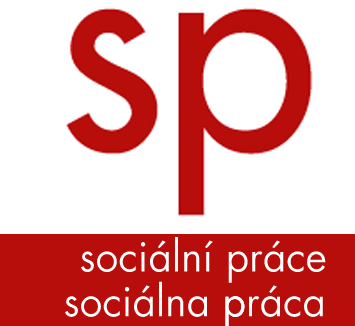This following collection of international articles from Russia, France, Germany, the Czech Republic, and India is based on the common theme of migration and integration and offers new perspectives, analysis and evidence for social work academics and practitioners working in the field of integration services and policy. The articles and research notes cover topics such as the effectiveness of migrant labour policies and practices, the added challenges faced by migrant parents and families, the exploitation of internal migrant workers, and the meaning of ‘whitening’ for the second generation of migrants. Challenges of achieving integration, equity and cohesion linked to the increasing migration and diversity are common to all the represented countries.
Current trends and events have highlighted the importance of social integration. The civil movement Black Lives Matter has reminded governments of the dire social, economic, and political consequences of ignoring racial, ethnic, and cultural diversity over multiple generations. The current Covid-19 pandemic has exposed how a higher incidence of poverty, overcrowded housing conditions, and high concentration in jobs where physical distancing is difficult, has placed migrants at a significantly greater risk of contracting the virus than natives born in OECD countries (OECD, 2020).
Unpredictable and changing patterns of global migration, together with growing super-diversity, have promoted an integration crisis for many welfare states across Europe and globally. Concerns and fears as to the structural, political, religious, and economic ramifications of mass migration have adversely weakened commitment to humanitarian values and human rights ideals and support of the free movement of people across borders (Niemann, Speyer, 2018:31). Migration appears to have touched the raw nerve of national and cultural identity, particularly in Europe, fuelling fear of external threats to cultural identity, trust, social cohesion, and border control (Börzel, Risse, 2018:17–18). At the same time, there has been a rise in right-wing populist politics, particularly across European Union countries, based on anti-immigration and national security concerns (Anand et al., 2020).
The 2015 European migration crisis has transformed into an integration crisis. The term integration is defined as a process where separate groups are combined to form a unified society, implying a coming together as a whole (Pam, 2013). In Europe, the term social integration is favoured over the concept of assimilation. However, social integration remains a highly complicated and somewhat contentious concept, involving multiple definitions, dimensions, measurements, and paradoxes (Heckmann, 2005:13–15; Borrmann et al., 2017). Structural integration, for example, refers to individuals’ and groups’ positioning in terms of participation in the core institutions of the receiving society i.e., education, housing, health, social welfare citizenship and political participation. It is measured by the performance of different migrant groups compared to the native population. Cultural integration is concerned with the acquisition and transmission of knowledge about the culture and way of life of the receiving country i.e., norms, values, behaviours, and language, and is often measured based on two-way processes of changes between a migrant and the receiving communities. Interactive integration is the participation and acceptance of immigrants in the sphere of primary social relations and networks of the host society, often conceptualised through the acquisition and building up of various kinds of social capital. Typical indicators of interactive integration are friendship patterns, membership of clubs and organisations and, at a deeper level, romantic partnerships, and intermarriage. Finally, identification integration develops at a later stage in the integration process and builds on the other three. It represents the stage where the migrant sees her/himself not just as a migrant actor within the host-country social system but as having a real sense of belonging with that collective body – a sense of ‘belonging’ and wellbeing in the host society and culture. Within the European Union, migrant integration is closely monitored with measurements such as the Eurobarometer (EUROPEAN UNION, 2018), involving indexes that quantify migrants’ access to nationality (citizenship), anti-discrimination protection, education, family reunion, health labour market mobility, permanent residence, and political participation.
Not surprisingly, the social integration represents an emerging field of social work practice, involving specific expertise, strategies, and interventions. Like so many social work concepts and approaches, the term has been uncritically adopted by government and social policy. For example, integration is the defining concept of the European Union and the basis of notions of European Identity (Teckiner, 2020). The articles contained in the Winter issue of this journal involve a welcomed critique of migrant integration policies and practices in Europe and other countries, which we will also discuss.
While social integration is guided by values of acceptance of cultural difference, tolerance, diversity and respect of human rights, the strategies employed by services and professionals tend to revert to assimilation thinking. The aim of introducing migrants into the mainstream society is a highly desirable process, but unfortunately, it still encompasses a heavy connotation of ‘them’ and ‘us’ (European Union, 2018) i.e., the premise that migrants are to be integrated into the dominant society and culture. The ideal of twoway integration, where the process of change is dynamic across migrant and receiving cultures in response to diversity, is largely discussed. However, the default position one-way integration, often disregarding the social, economic, and cultural benefits migrants bring to the receiving country. Whilst it is generally acknowledged that migration results in the loss of economic and social capital, migrants possess the motivation, agency, and capabilities to convert losses into gains, creating new forms of social capital that ultimately enhance their position in the receiving country (Erel, Ryan, 2018; Engilson et al., 2020).
Social integration is not necessarily a neutral process, as it involves both political aims and a politicized process. For example, integration is promoted as a way of political, cultural, and civic rights for migrants. On the other hand, integration is used to promote the greater social good with an emphasis on societal cohesion and national security. The potential for conflict between migrant rights and dominant societal interests to maintain the status quo is inevitable. The issue of migration and integration is frequently hijacked for political and nationalist purposes, for opposing immigration as in the case of Brexit (UK), promoting further religious intolerance and islamophobia as in the case of Je suis Charlie (France). The shape and outcome of social integration depend on two factors; namely the self-conception of the host society and the desire of immigrants and their descendants to integrate into the receiving society. Integration initiatives are often restricted by existing forms of inequality and social and economic stratification and national beliefs as to the positioning of outsiders, such as migrants. It is unrealistic to expect that migrants and their descendants have an easy pathway to equality in societies that are already inherently unequal. Academics and practitioners increasingly apply an intersectional approach, to understand how gender, ethnicity, racialisation, and class are interrelated and intermeshed in determining social position and access to power. Intersectionality and its focus on social exclusion are very relevant perspectives in better understanding the opportunities and challenges of migrant integration (Erel, 2010).
New and emerging patterns of migration, such as circular, returning, and transitionary migration, mean that many migrants do not necessarily desire, nor seek integration into the culture and structures of the receiving country. For example, refugees commonly travel back and forth across international borders and between different societies and cultures. In doing so, they develop multiple hybrid or transnational identities reflecting their participation in life both ‘here’ and ‘there`. Evidence suggests psychological and sociological advantages for migrants choosing to form clusters or live within diasporas. Yet this conflicts with underlying concerns relating to physical and social distancing between migrants and the native-born and the potential for inter-community conflict and violence, and possibly radicalisation (Hooghe, Marks, 2019). Recognition of new realities in migration is essential for updating outdated assumptions related to migration and integration. Social workers and other social professionals working in the field of migration integration find themselves on the front line of current discourses and debates. Whilst integration policy in many countries focuses on economic and educational opportunities and the acquisition of language skills for migrants (Anand et al., 2017), this represents a somewhat narrow approach, given the complex nature of integration as an outline. Other concepts such as social inclusion and multiculturalism offer alternative insights into diversity. Social inclusion is the act of making all people in a society feel valued in all aspects, such as civic, social, economic, and political activities, as well as participation in decision making processes and the provision 4 5 of certain rights to all individuals and groups in society. Multiculturalism is a popular paradigm in preventing the exclusion and marginalisation of migrants. It takes ethnic and cultural pluralism beyond the liberal notion of creating a melting pot where different groups eventually assimilate into one unifying society. Multiculturalism offers up a salad bowl model of diversity, where the difference is actively supported and advocated, and the rights of minority groups are championed. Kymlicka (1996) talks about the “group differentiated rights” that help both religious and cultural minorities operate within the larger state, without impinging on the rights of the larger society. The multicultural agenda has been adopted mainly in immigrant countries such as the USA, Canada, and Australia and less so in Europe. The critics of multiculturalism suggest that the co-existence of cultures is both unrealistic and unsustainable and, yet again, despite multiculturalism, the tendency for the dominant culture is to reproduce and oppress (Nagle, 2009; Nipperess, Williams, 2019). Equity and subjective quality of life of migrants are also worthy of consideration in both promoting and measuring integration for all (Kankaanpää et al., 2019). The following contributions also inform a more critical understanding of integration and building more inclusive multicultural and equitable communities.
In the first article of this special issue, titled Governance of Migrant Integration in the Czech Republic, author Eva Dohnalová asks critical questions as to the formulation of integration policy in the Czech Republic. She suggests that social work is a key integration profession, not only addressing issues of housing, employment, but also cultural, interactive and identification priorities such as health, wellbeing, family life, and civil society. The paper criticizes the lack of responsibility of the state, regional, and municipal public administrators to champion the integration agenda, a task that is increasingly relegated to civil society organizations, which often face a lack of funds and a rigours system of quality and accountability. Dohnalová concludes that migrant integration should be a cross-cutting topic of mainstream public policy, ensuring a more wholistic approach to social inclusion for all!
Sizikova Valeria Viktorovna, Anikeeva Olga Alexandrovna, Afanasyeva Olga Olegovna and Karpunina Anastsia Vladimirovna examine the concept of cultural adaption of Ukraine migrants in Russia in their article Adaptation of Forced Immigrants in Russia: Policies and Practices. The authors argue the importance of multiculturalism and two-way integration and acknowledging diverse cultural identities. This study of the legal documents of forced immigrants concluded that both social services and social work could ensue more effective outcomes for migrants, by adopting the concept of cross-cultural adaption. It also states that the facilitation of public-private partnerships (involving state and private capital) for housing and employment initiatives and the increased dissemination of information as to legal rights, protection, and advocacy would, according to the authors, greatly support an effective integration of Ukraine migrants. This article also touches upon the importance of promoting community strengths and capabilities approaches for the enhancement of migrant’s level of activation and motivation.
Natalie Joubert offers an exploration of Parenting in a New Context – Eritrean Parents Living in Denmark and examines the narratives of refugee parents and their complicated experiences of parenting across different communities. Using a narrative approach, she examines how Eritrean parents made meaning of their lived experiences to inform about the integration of Eritrean families in Denmark. Understanding the parenting role and demands of migrants is arguably a key element, if not a neglected dimension of the integration policy and practice. The findings suggest that interfamilial change and adaptation were influenced by the juxtaposition of Danish welfare services and institutions, the social environment and Eritrean culture and community. Further research on parenting practices is called for, so as understanding the critical importance of the role of family and parenting in cultural, interactive and identification integration.
The article on Migrant Construction Workers of India by Neeta Mukherji is a reminder of the multiple forms of migration, including the internal movement of people within a state, often for labour market purposes. Poverty, unemployment, low social status, and illiteracy frequently compels unskilled poor labourers to migrate from villages to cities in search of a livelihood. Gender is closely associated with vulnerability, hardship, and exploitation across most forms of migration, and particularly in this case study of Indian women migrant construction workers. In India, community organization has proven to be an effective method of social work intervention and involves social workers acting as mediators between migrant construction workers, government agencies, and builders to lobby for workers’ rights and legislative reform. The paper also alludes to the devastating implications of post- COVID-19 lockdowns on migrant workers and the need for schemes and programmes to protect the human rights of migrant construction workers (Sengupta, Jha, 2020).
It cannot be overemphasised that women and children experience increased vulnerability and risk because of forced migration. Tatyana Suslova, Larissa Starovoitova and Tatiana Demidova’s article on Social and Psychological Adaptation of Children of Forced Migrants to the Conditions of the Host Country analyses the socio-psychological adaptation experienced by child immigrants in Russia. The study involves an innovative methodology of information analysis, sociological observation, and expert assessment. The authors conclude that social and psychological assistance to the children of forced migrants should be a priority of both state and individual aid organizations. Again, this paper demonstrates the importance of cultural and interactive integration strategies and the need for a structural reform and partnership between governments and NGO’s. Finally, the following two articles of this issue involve a very different theme connected to medical social work. First article The Use of Reminiscence Therapy as an Important Psycho-Social Intervention in the Long-Term Hospital Care by Hana Janečková, Květoslava Hošková and Jelena Skibová, explores the impact that reminiscence therapy has on the quality of life of long-term care patients in Slovakia. I am heartened to see the application of useful measurement tools evaluating the outcome of social work interventions with clients described in this in this study. Perhaps the effectiveness of social work could be a theme for a future special issue of the journal?
The article, Social Construction of Social Work in Domiciliary Care Service authored by Kvetoslava Repková, again a Slovakian researcher, offers a fascinating exploration into the social construction of the social work role in home care, using a detailed case study methodology. Both articles exemplify a strong tradition in practice research within social work.
The two research notes in the final section of this issue, are written by early-stage researchers, offer more of a theoretical exploration of migration and the challenges of social inclusion. In her research note, Challenging the Problematisation of Labour Inclusion of Migrants and Refugees in East Germany: New Perspectives and Mandates for Social Work, Monique Ritter addresses the employment of refugee migrant workers in the aged care system. Using a critical anti-racism perspective, the author examines how white German carers and users of care services perceive interaction with the growing numbers of carers with a migrant background employed in the care industry. Again, this is a global trend reflecting globalised labour markets in social care and mixed outcomes for all stakeholders. The author explores the role and responsibility of social work to promote the inclusion of migrants in adult social care roles, together with promoting anti-racist approaches in social gerontology education and practice.
Ceren Şengül’s research note Understanding Belonging Amongst Second-Generation Immigrants Through Whiteness exposes the ongoing narratives of belonging and social inclusion for secondgeneration Turkish immigrants in France. Her research involves a collection of life stories and oral narratives collected from second-generation immigrants. Central to the findings is that a sense of ‘in-betweenness’ is commonly experienced by second-generation immigrants (adult children of migrants), stemming from living and interacting in both ‘white societies’ and ‘non-white social environments’. The experience of secondgeneration immigrants raises questions as to the complexity and intersectionality of positioning of immigrants over several generations and the sensitive and temporary nature of belongingness.
The examples of European and international social work research on migration and social integration collated in this special issue contribute to a broader understanding of this specific field of professional research and practice and raise critical questions for the future direction of integration policy and practice across Europe and globally.
Janet Carter Anand,
Professor of International Social Work, University of Eastern Finland, Finland
Stefan Borrmann,
Professor of International Research, Landshut University of Applied Sciences, Germany
p. 2-5
Chcete-li zobrazit tento obsah, musíte být předplatitelem časopisu.
Nemáte předplatné? Objednejte si ho.






